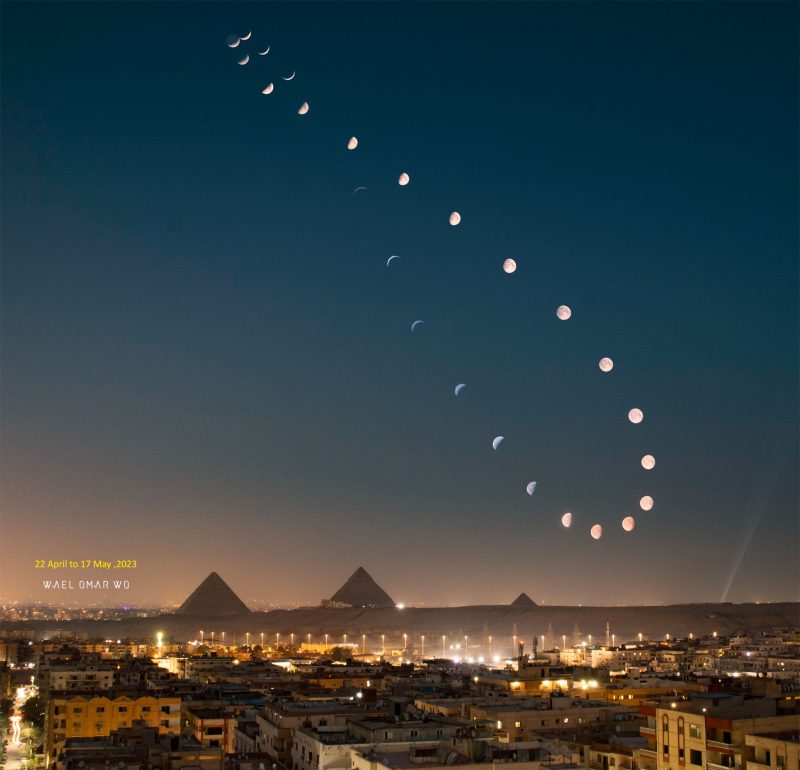
A moon analemma
Maybe you’ve already heard of a sun analemma, which is a composite photo of the sun taken over the course of many months. If they’re done correctly, such composites trace out a figure-8 path. Likewise, photos of the moon can be used to create a figure-8 path in our sky, over the course of a lunar month. NASA explains how to capture a moon analemma:
On average, the moon returns to the same position in the sky about 50 minutes and 29 seconds later each day. So, photograph the moon 50 minutes 29 seconds later on successive days. Over one lunation or lunar month it will trace out an analemma-like curve as the moon’s actual position wanders due to its tilted and elliptical orbit.
Wael Omar’s lunar analemma
Wael Omar explained his journey to this image:
The journey of this image was really challenging and exhausting. On top of that were the sleepless nights I went through to stay awake waiting for the scheduled time to take the image of the moon. There were also some cloudy nights, and I was a little lucky to see the moon through it when the time of the shoot came.
I used a Canon 200D camera with 18mm lens. During the last week, the images were during daytime. That’s why the moon images on these days are a little blue. They were so faint, but I could see them when I zoomed deeply on the images. Of course, the details were absent, so I came up with an idea to use my GOTO mount to point to the location of the moon. (It would be impossible to see it with the unaided eye.) Then I took images with the help of my Redcat 51 scope. Finally, I put them in the same location of the moon on the 18mm lens image.
I took a vacation from work on the last two weeks to be ready for the moon images, as they were after midnight and during daytime. I exerted so much effort to image the foreground, as I climbed up a 50-meter-high building to have a clear view of the pyramids. Then I blended this view with the total analemma I imaged.
Your efforts were well worth it, Wael!
Bottom line: A moon analemma follows the path of the moon over the course of a lunar month. Thanks to Wael Omar for this stunning composite image!











